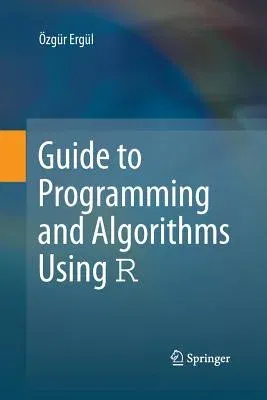When encountering difficult concepts in computer programming for the
first time, many students struggle to find simple explanations in their
textbooks. Information can also be hard to find on common mistakes made
when implementing algorithms and writing programs.
This concise and easy-to-follow textbook/guide provides a
student-friendly introduction to programming and algorithms. Emphasis is
placed on the threshold concepts that present barriers to learning,
including the questions that students are often too embarrassed to ask.
The book promotes an active learning style in which a deeper
understanding is gained from evaluating, questioning, and discussing the
material, and practised in hands-on exercises. Although R is used as the
language of choice for all programs, strict assumptions are avoided in
the explanations in order for these to remain applicable to other
programming languages.
Topics and features: provides exercises at the end of each chapter to
test the reader's understanding; includes three mini projects in the
final chapter that students may enjoy while programming; presents a list
of titles for further reading at the end of the book; discusses the key
aspects of loops, recursions, program and algorithm efficiency and
accuracy, sorting, linear systems of equations, and file processing;
requires no prior background knowledge in this area.
This classroom-tested primer is an essential companion for any
undergraduate student approaching the subject of programming and
algorithms for the first time, regardless of whether their courses are
part of a computer science, electrical engineering, mathematics, or
physics degree.


